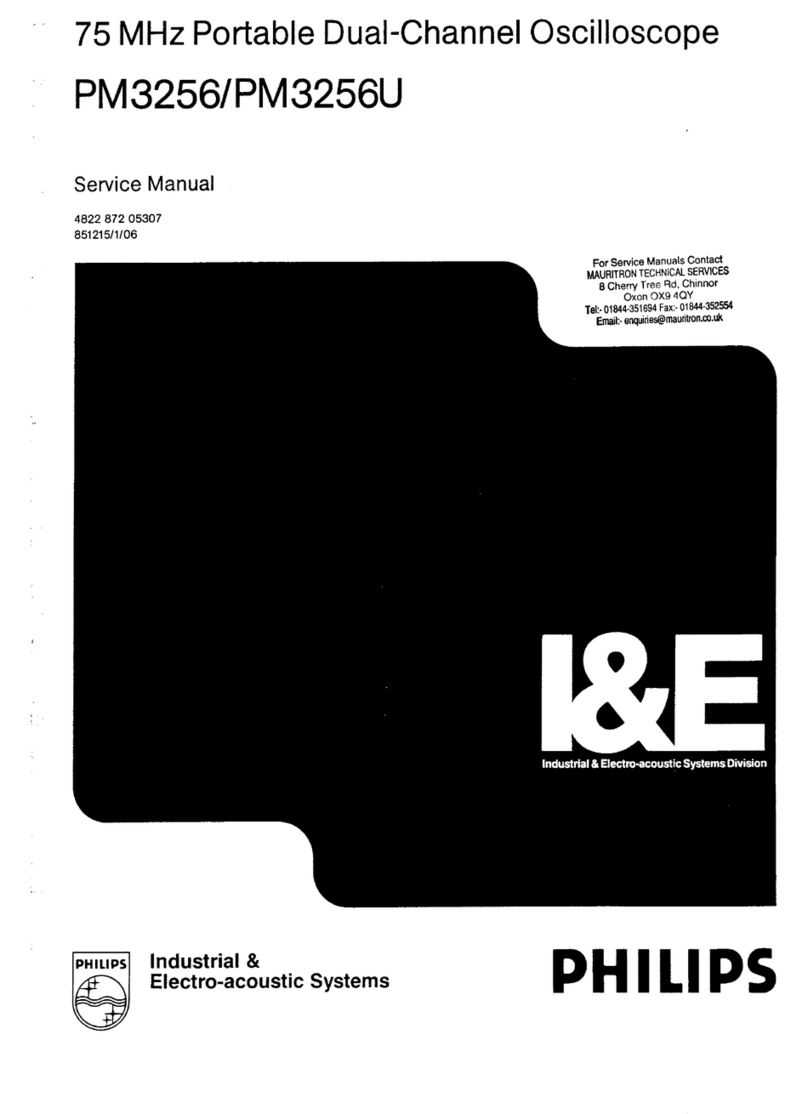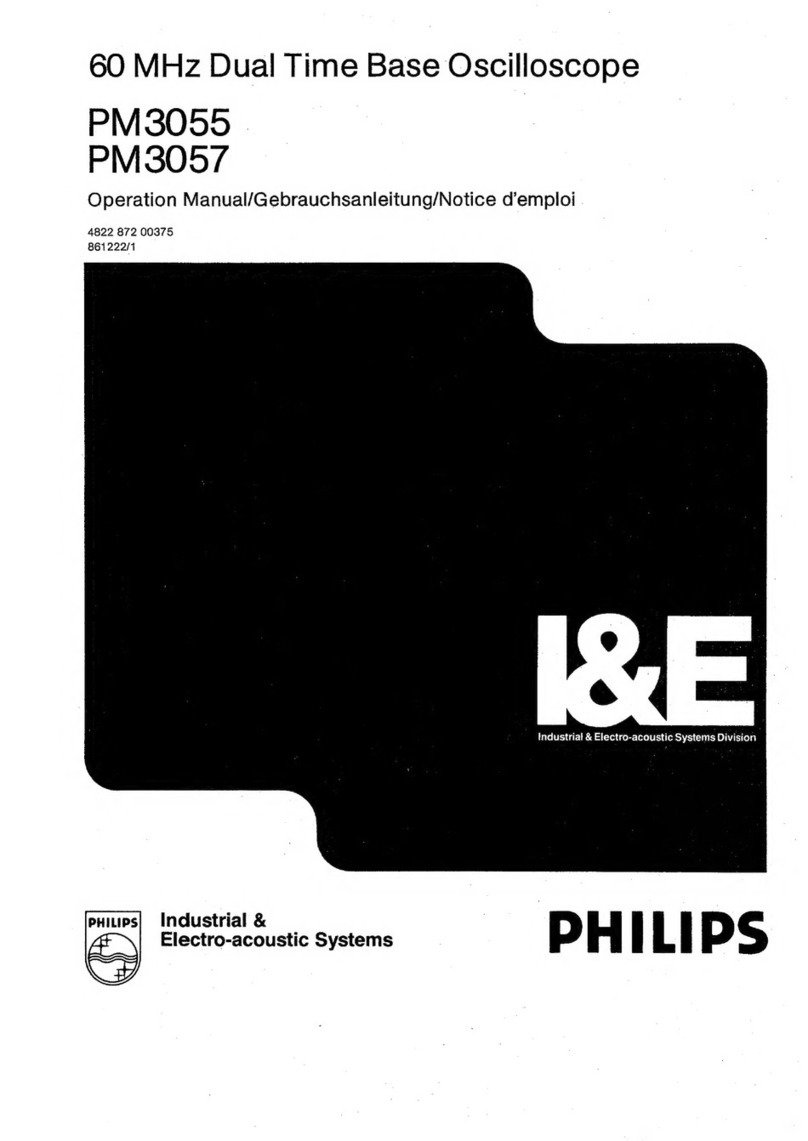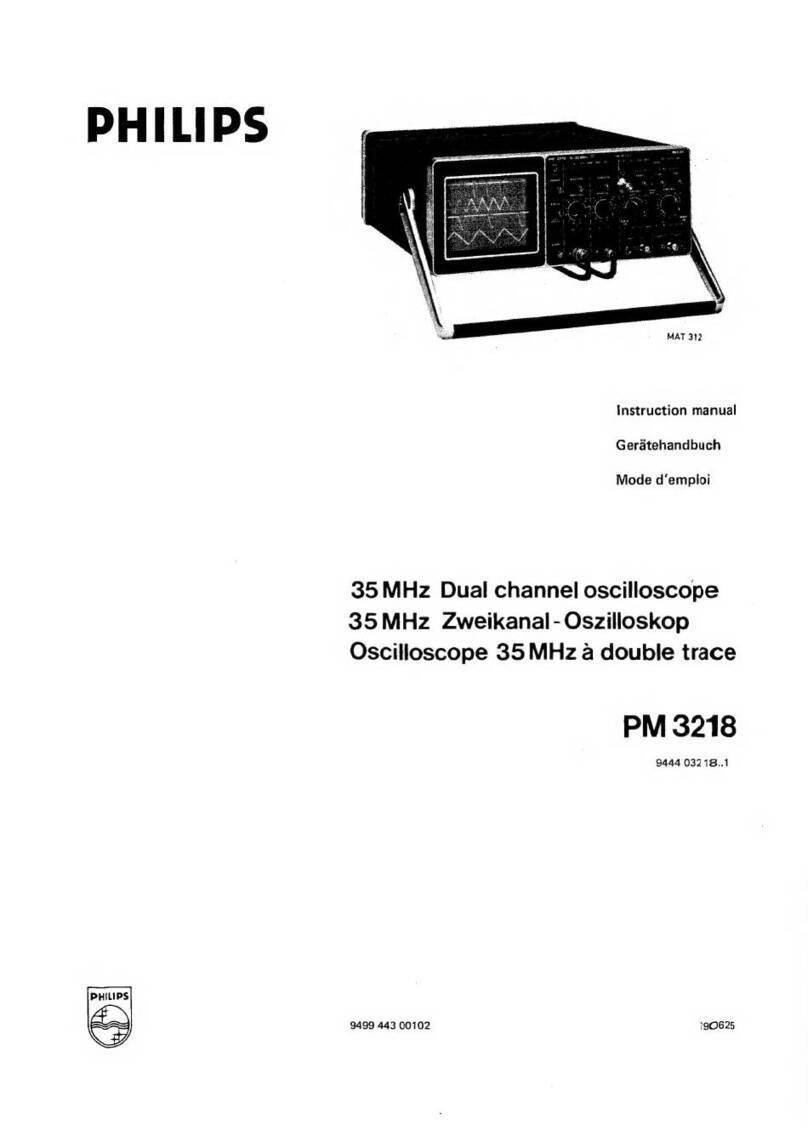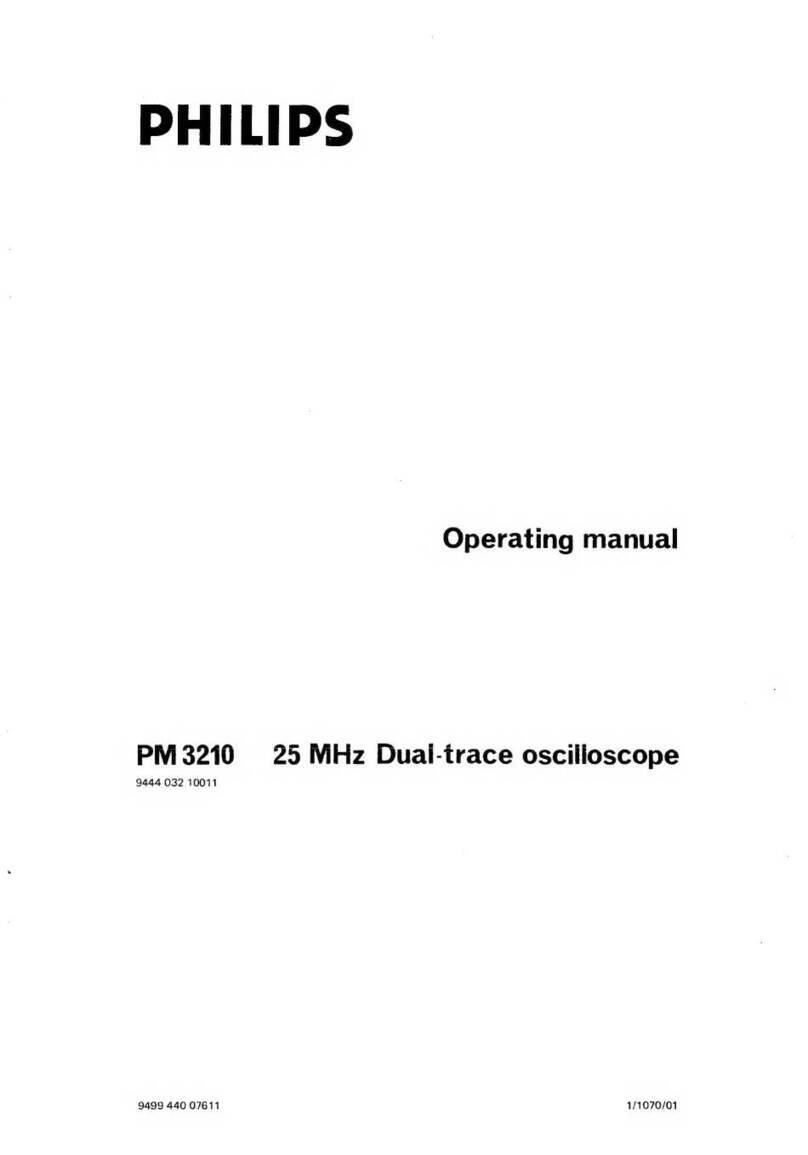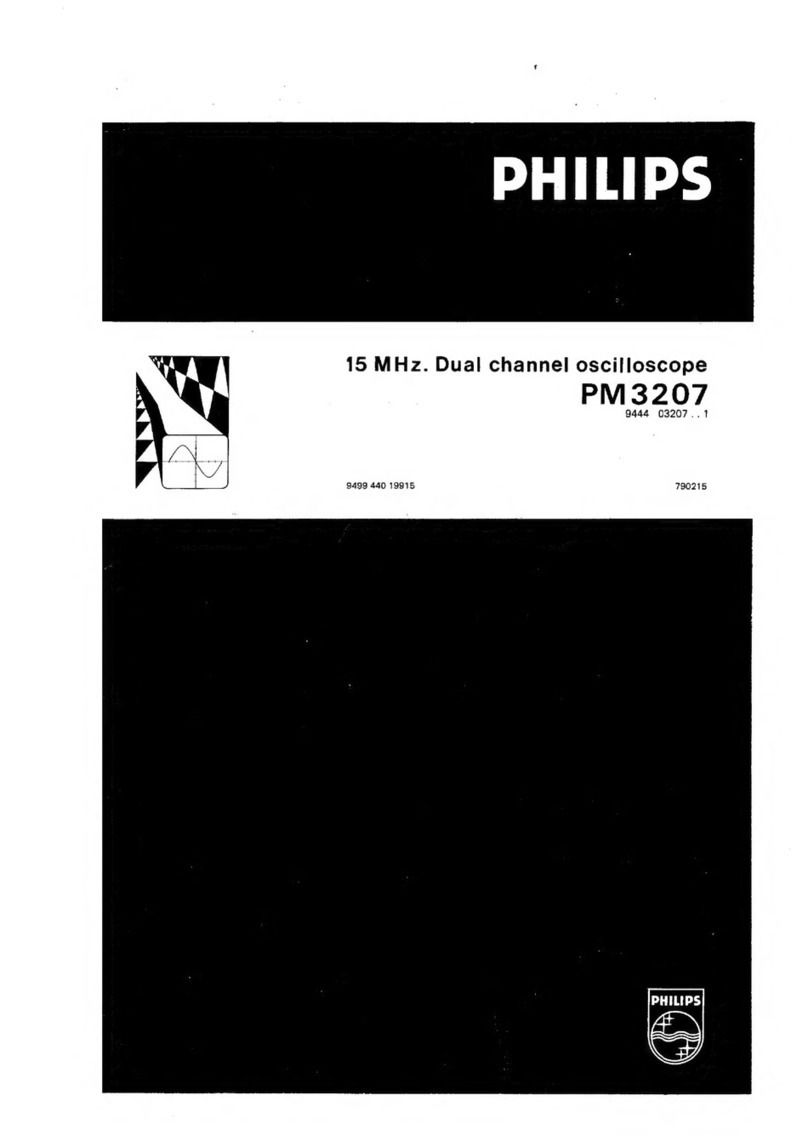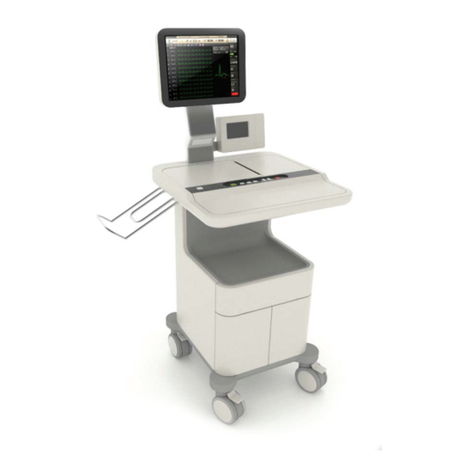
10
1.4. DESCRIPTION OF THE BLOCK DIAGRAM (see Fig. 1
)
The bridge circuit comprises range resistors, reference parts and afine-adjustment potentiometer.
The range resistors in the bridge circuit are identical for all measurements and can be switched-over with the
range selector.
For R-measurement aresistor is used as areference, for C-measurement acapacitor with aseries-connected
potentiometer and for L-measurement acapacitor and apotentiometer; these are series-connected in the
higher Q-range and parallel-connected in the lower Q-range. The fourth branch of the bridge is the sample
itself.
The bridge circuit is earthed at that end of the measuring diagonal which is connected to the adjusting
potentiometer and the reference parts. In this wav, harmful influence of switching and stray capacitances
remains small.
The d.c. voltage supply for the bridge is originated from aseparate mains part, the input voltage of which is
tapped from aextra-screened secundary winding of the mains transformer.
The internal resistance of this mains part is dimensioned in such away that low-ohmic measuring objects can
not be overloaded.
The a.c. voltage supply for the bridge is originated from aWien-bridge oscillator, the output of which is coupled
to the bridge circuit via atransducer.
The mater amplifier amplifies the voltage across the diagonals of the bridge circuit. For R-measurements a
d.c. voltage appears, which is chopped by an electronic switch and amplified in an a.c. voltage amplifier
(identical for all measurements) with high-ohmic input resistance.
The output voltage of the amplifier is rectified and indicated with amoving-coil indicator. As aresult of the
logarithmic characteristic of the amplification, the indication sensitivity is higher for lower input voltages, i.e.
near the bridge balance.
Push-button SEARCH is used to search the correct measuring range. As long as this button is depressed, the
supply voltage of the bridge is connected to aseries circuit consisting of the sample and the measuring range
resistor. The voltage drop across the sample is indicated. In this mode the meter-amplifier characteristic is
switched-over into alinear amplification characteristic.
2. Directions for use
2.1. INSTALLATION
2.1.1. Safety regulations (see IEC 348 or VDE 0411)
Before using the instrument after stocking and transport, pay attention that the instrument has not been
mechanically damaged. If there is doubt about the safety (of the protection) check this.
If the protection is no longer guaranteed, disconnect the instrument from the mains and do not operate it.
Do not open the instrument before it has been disconnected from the mains.
Maintenance and service works, which must be done with the instrument on, should only be performed by a
qualified technician.
The mains connector may only be plugged in atrains socket with earth contacts, It is not allowed to make this
safety protection inoperative, e.g. with an unproper extension cable.
1.2. Controls and sockets (see Figs. 2and 3}

